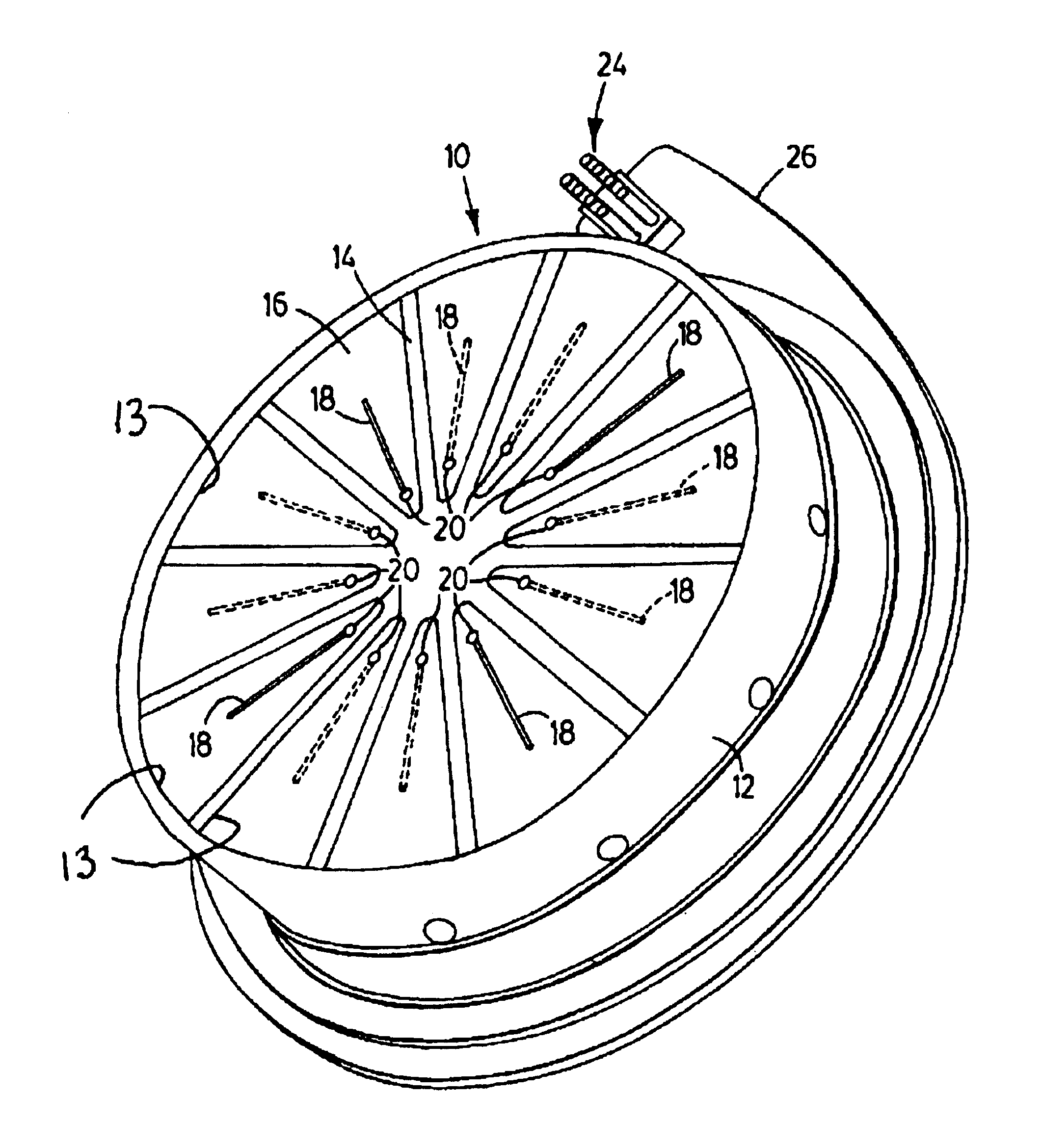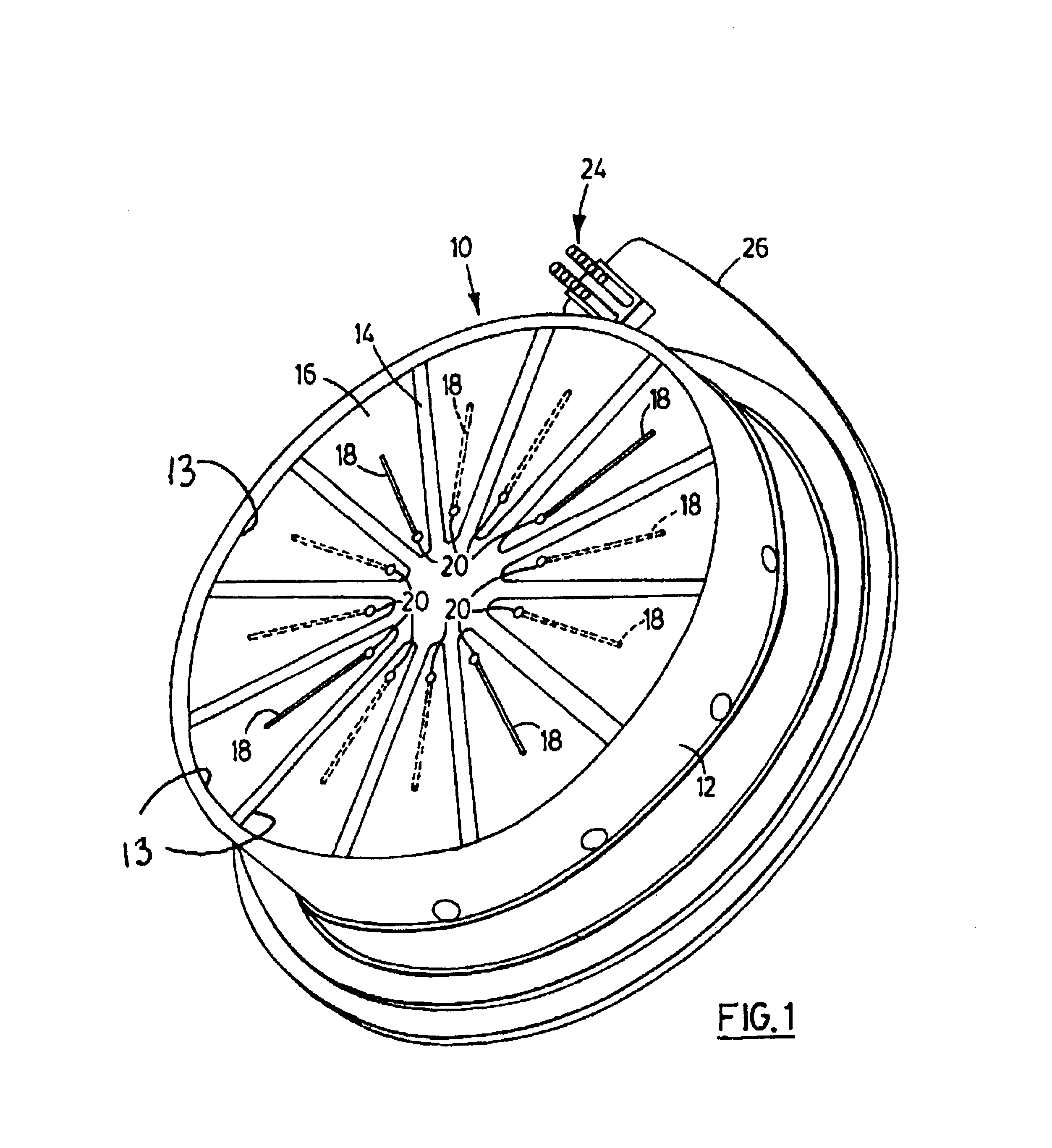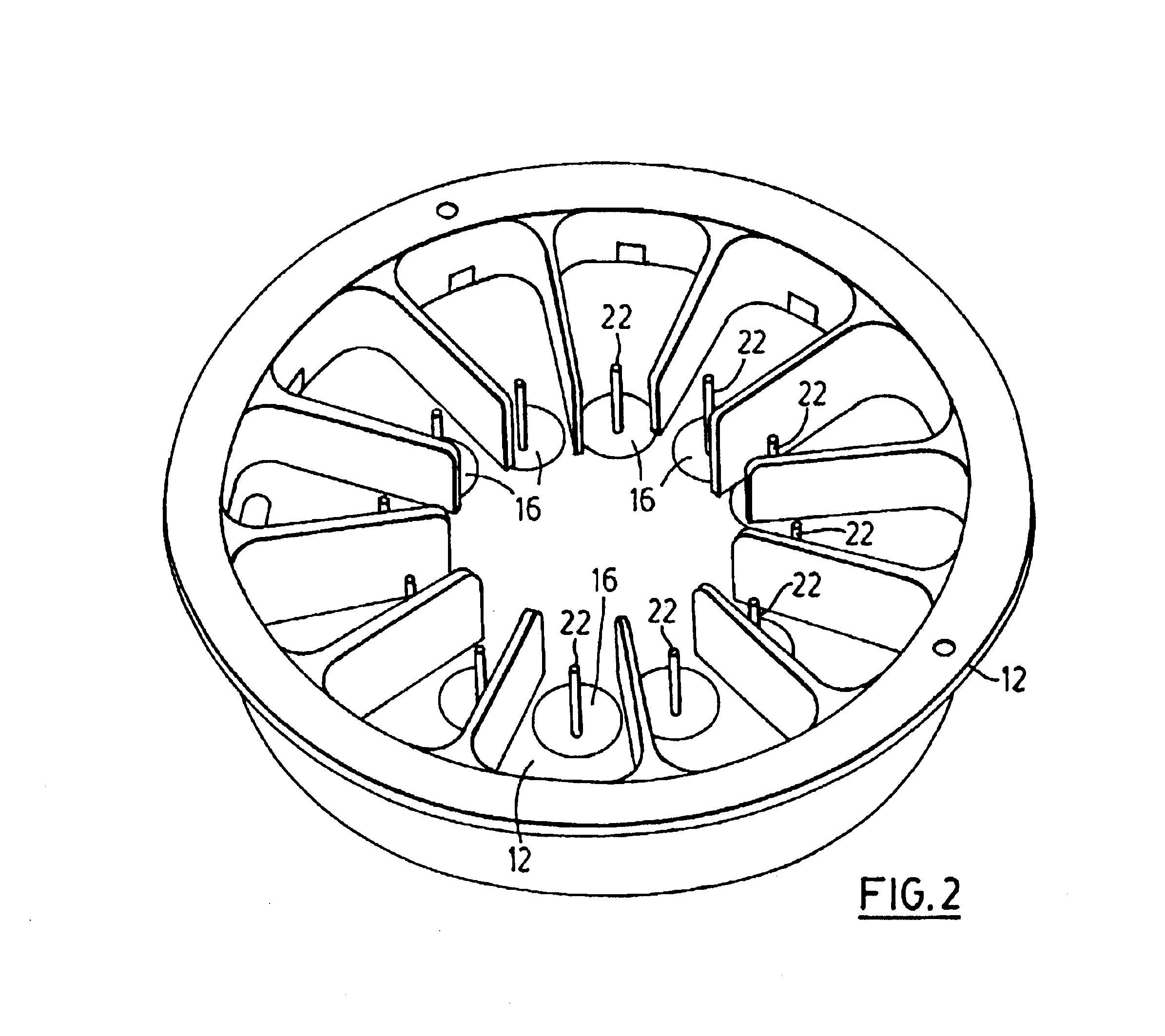Satellite charge monitor
a satellite charge monitor and monitor technology, applied in the field of satellite charge monitors, can solve the problems of insufficient energy of electrons, inability to meet, temporary or permanent damage to satellite electronic circuits,
- Summary
- Abstract
- Description
- Claims
- Application Information
AI Technical Summary
Benefits of technology
Problems solved by technology
Method used
Image
Examples
Embodiment Construction
Referring to FIG. 1, a satellite charge monitor shown generally at 10 includes a metal or otherwise electrically conducting housing 12 made for example of lightweight aluminum or alloy of aluminum. Housing 12 is divided into twelve pie-shaped compartments 13 separated by electrically conducting partitions 14 (which form part of the electrically conducting housing 12) with a pie-shaped slab of dielectric material 16 located in each of the twelve compartments 13. Each dielectric slab 16 has an electrical conductor 18 (e.g. wires) embedded in it. These wires 18 are embedded at different depths in the dielectric slabs 16 so for example three of the wires 18 may be flush with the top surface exposed to space being located in a groove formed in the top surface of the dielectric slab 16. It will be understood that wires per se are not necessary but any electrically conducting material may be used such as conducting foils, ribbons to mention just a few. Another set of three wires may be emb...
PUM
 Login to View More
Login to View More Abstract
Description
Claims
Application Information
 Login to View More
Login to View More - R&D
- Intellectual Property
- Life Sciences
- Materials
- Tech Scout
- Unparalleled Data Quality
- Higher Quality Content
- 60% Fewer Hallucinations
Browse by: Latest US Patents, China's latest patents, Technical Efficacy Thesaurus, Application Domain, Technology Topic, Popular Technical Reports.
© 2025 PatSnap. All rights reserved.Legal|Privacy policy|Modern Slavery Act Transparency Statement|Sitemap|About US| Contact US: help@patsnap.com



